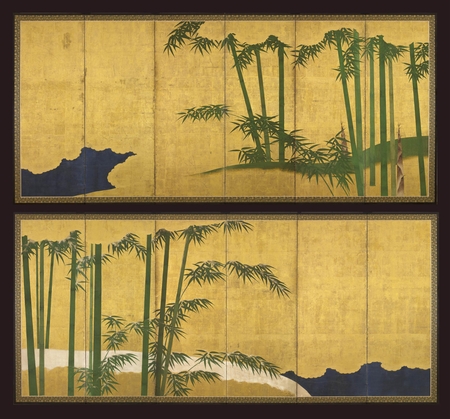Product Description
6957 A pair of six-fold paper screens painted in ink and colour on a gold ground with take (bamboo). The right hand screen represents summer with new bamboo shoots growing amongst the tall bamboo stalks, and the left hand screen with a dusting of snow on the leaves of the bamboo and on the ground portrays winter.
Japan 18th century Edo period
Dimensions: H. 67¼” x W. 148½” (170.5cm x 377cm)
Take (bamboo) represents strength, vitality and survival through adversity due to its delicate structure that bends in the wind, but never breaks. It is also known as one of the Three Friends of Winter along with the plum and the pine, each symbolizing perseverance and integrity as they survive the winter without withering. By analysing the strength, dependability and flexibility of the bamboo, the ancient Chinese scholar took these characteristics as his ultimate goals. The painting of bamboo also employs all the calligraphic brush strokes. For these reasons it has come to symbolize the gentleman scholar.
Haiku by Otagaki Rengetsu (1791-1875) on bamboo:
Written at the age of 80 (1870
This gentleman
Grows and grows
Most auspiciously
Learn from him and
You, too, will flourish forever.
For a similar pair of six-fold screens attributed to Tōsa Mitsunobu held in the collection of the Metropolitan Museum of Art, New York, see: Japanese Design in Art (Nihon no ishou) no.7, pl.39.
n.b Generally good condition. There are some small areas of repair to the screen commensurate with age.






